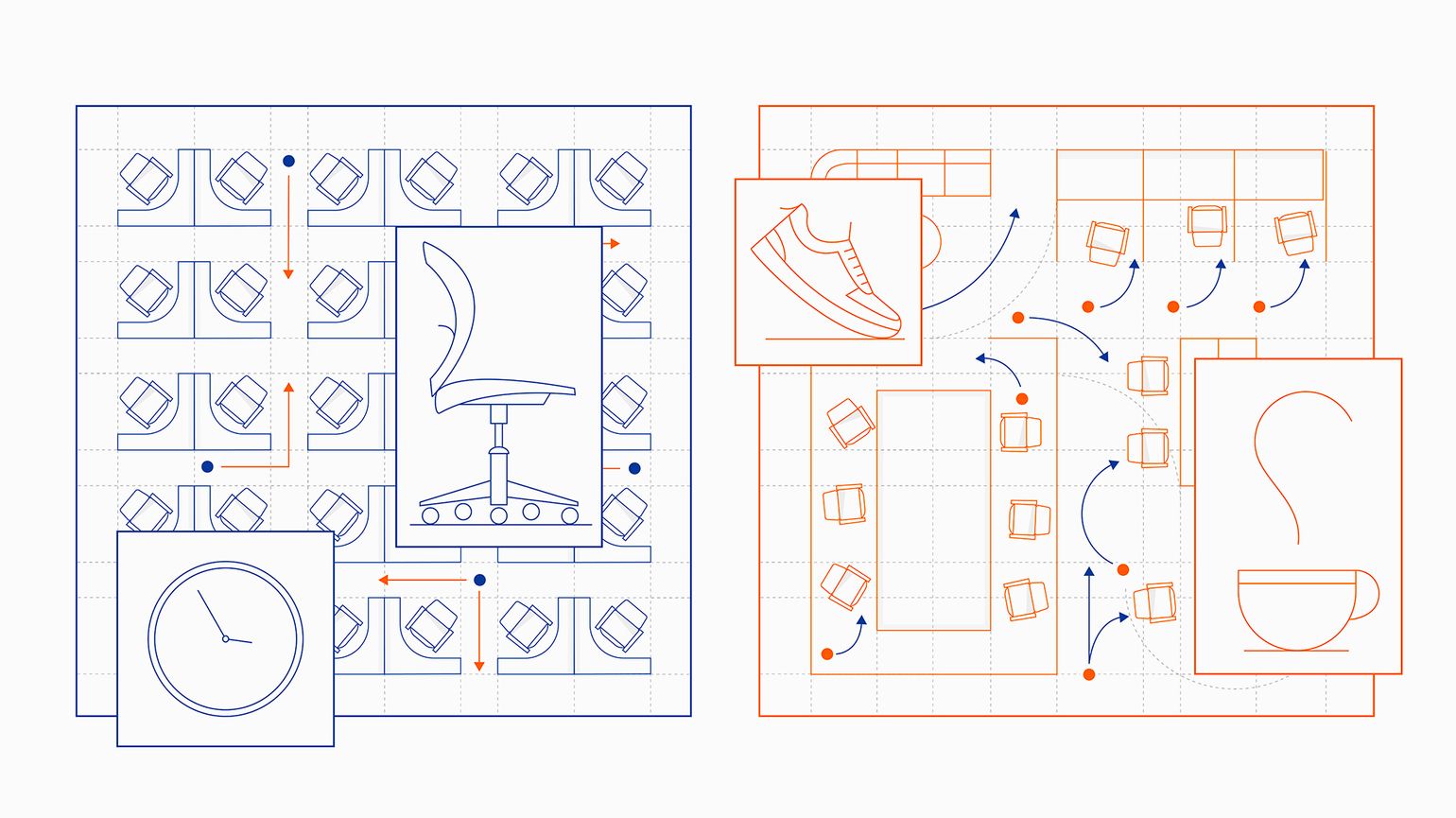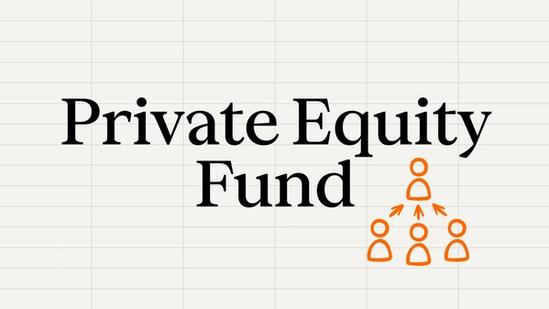What Will the Future Office Look Like?


How hybrid working is transforming the workplace, five years after the start of the Covid-19 pandemic.
- Many workers no longer go into the office for most of their working week, but some employers are pushing back against this growing trend.
It has been five years since the Covid-19 pandemic upended the daily office grind. Companies and staff are still trying to work out what should replace it.
In one of the biggest shifts in labor practices, workers no longer go to the office for the majority of their work time, according to a 2024 survey of more than 300,000 employees by Leesman, a global workplace experience consultancy. Only 9 percent of respondents were in the office all the time, while their coworkers preferred to stay at least part of the week at home, where they saved on commuting costs and could better balance personal commitments.
Some employers, however, are pushing back, citing concerns over falling productivity levels as well as an erosion of company culture. Amazon and JPMorgan Chase are among the major companies that have returned to a five-day-a-week office schedule.
Could the future of the office still lie somewhere in between? Many companies seem to think so. As technological upgrades make it even easier to operate remotely, employers are trying to weigh any concerns against the benefits of leaner office costs and a happier workforce. Lloyds Banking Group, for example, accepts that hybrid working is here to stay but requires employees to work at least two days a week in the office.
Already, many offices look very different from just a few years ago. Hybrid work and having unassigned desks are increasingly the norm. Done well, such offices can become an attractive, versatile environment with space for features such as a communal lounge, pantry, quiet room, and gym. Such layouts also send a positive signal to staff that their employer cares about them, said Niki Fuchs, Chief Executive at serviced office provider Office Space in Town (OSiT).
Reviewing office space needs
In big cities with high office rents, such as London, Hong Kong and Tokyo, the pandemic was an opportunity for a robust review of office space needs. According to Savills, the average office worker in Germany has about 20 square meters of office space. In the UK, the statutory minimum size for an office workspace is 11 cubic meters, giving each staff member less than 5 square meters of floor space for a typical ceiling height.
Tim Oldman, Co-Founder and Co-CEO of strategy group Aéto, told the Future of Work Summit in September that most organizations could reduce their office space by 30 to 40 percent. Moreover, Oldman added, offices now needed to be attractive enough to lure workers in. “The money you save in not commuting, you invest in your own environment. So, the hyper-home environment is now competing with the corporate environment.”
HSBC has done just that. Following the pandemic, it told staff it would reduce its office space globally by about 40 percent to reduce costs and energy usage while recognizing the merits of allowing more employees to work off-site. It will downsize its headquarters in 2027 from Canary Wharf to a smaller City of London site that is well-situated for amenities and transport links.
Worker demand for a hybrid model is clearly there. A UK-focused Payfit survey in early 2024 showed nearly 50 percent of respondents prioritized workplace flexibility over a pay increase of as much as 15 percent. More dramatically, the advertising agency WPP triggered uproar and a protest petition among staff in January when the CEO mandated four days a week in the office.
This is all driving an overhaul of the modern office. The variety of lighting, furnishing, and layout is now key to creating an environment that nurtures collaboration, productivity and staff satisfaction. Before Covid, these features were nice to have. Now, they are seen as essential.
Variety in layout and styling matters
At EQT, the private equity giant has long used a Swedish model, preferring an informal and transparent open-plan approach to private offices and cubicles, said the firm’s Head of Workplace, Katerina Ford. The firm designs their offices with a multifunctional purpose, providing collaborative, focus and social and wellbeing areas.
The company already operated a hybrid model before Covid, Ford said. Since the pandemic, attendance has picked up based on occupancy rates that are tracked in each office, she added. “I would say the offices are occupied between 40 percent and 60 percent most of the time. We have peaks midweek. On Friday, the occupancy tends to be on the lower end.”
Property owners such as OSiT are considering features such as medical and dental facilities, hair salons, beauticians, gym memberships and even nap pods. It’s reasonable to expect multiple in-office building services such as these to be commonplace in the future.
While this may seem like overkill, it is worth noting that some of the biggest fans of the office are recent graduates. In a UK government survey late last year, among the under-30s, just 19 percent said they follow a hybrid working pattern, compared to 29 percent of workers aged 30 or over.
“Employee satisfaction is measurable, but an office's direct impact on productivity is hard to measure.”
A Gallup survey in late 2022 found that while hybrid working could improve efficiency, autonomy and work-life balance, the office is still the best place for staff to work collaboratively. In the office, cross-functional collaboration and communication are easier, along with building working relationships and getting timely feedback. Most employees would agree that, almost by osmosis, it’s possible to learn about the company culture and business simply by being present in the office.
The younger cohort sees that company values and community come from learning, which means being around colleagues. The commute is a worthwhile trade-off for the in-person experience, but their expectations are still high – the office and its locale must be good. Amenities such as gyms, parks, cafés and retail outlets matter, as do good transport links.
Building quality and carbon footprint essential
Looking forward, it is clear companies remain unsure about their longer-term office needs. Fuchs from OSiT notes that the length of office leases has shortened dramatically in recent years. Long gone are the days of 10-15 year leases. “You’re lucky to get five years now,” she said.
According to Re-Leased, the average UK commercial lease length was 3.7 years in the first quarter of 2024, compared to 4.4 years five years earlier. Just 3.4 percent of new leases in the first quarter of last year were for 10 years or more.
Getting a top-quality building and an office with wiggle room to grow can make a longer lease possible. While the quality of fit-out is clearly important, companies are increasingly looking at the quality of the building itself. For example, EQT has commitments on sustainability. According to Ford, there’s a commitment to not lease offices that do not have gold-standard certification for sustainability using internationally recognized green building metrics.
Grade A buildings meet such standards and are priced accordingly – that is, at a premium. Larger companies are focused on their net-zero commitments and national targets, so demand for Grade A buildings is very strong, as older buildings with a larger carbon footprint are not an option.
Ford says that building quality reflects EQT’s purpose and culture, is popular with staff and is good for company credentials. She adds that for all new offices since 2022, EQT has sought flexibility in the use of space and unassigned desks to leave room for a 10-15 percent increase in staff down the line.
Employee satisfaction is measurable, but an office's direct impact on productivity is hard to measure. After all, productivity is dependent on many different factors. However, a creatively designed office generally reflects thoughtful management. Few would argue that high employee satisfaction and likely reduced absenteeism, thanks to having the right work environment and good management practices, will lead to greater output. If that leads to improved hiring and retention, it will help productivity, too.
ThinQ by EQT: A publication where private markets meet open minds. Join the conversation – [email protected]




